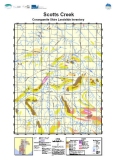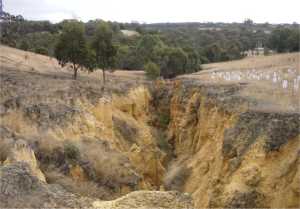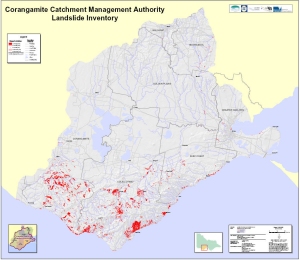The Erosion and Landslide Resource for the CCMA Region is an initiative under the Corangamite Soil Health Strategy (CSHS) and is a key deliverable under the program for 2006/2007.
This resource aims to provide detailed information on the distribution and spatial extent of erosion and landslides within the CCMA region. In addition, information is also provided on the rate of occurrence of erosion and landslides in selected target areas and insight into the impact on important assets through the development of a number of case studies.
| The Erosion and Landslide Resource includes: | 
|

|
|
|
|
Inventory maps for erosion and landslides (260 maps) Susceptibility maps for erosion and landslides (545 maps) Trend analysis for erosion and landslides in selected target areas (13 areas) Case studies detailing occurrence and impacts for erosion and landslides at significant sites and locations |
||
Whilst the primary purpose of this Erosion and Landslide Resource is to collate and document the research carried out during the 2006/2007 program for the CCMA and it's key service provider, the Department of Primary Industries (DPI), it is hoped the format and content can serve as a framework for future delivery of this valuable information to an even broader audience.


